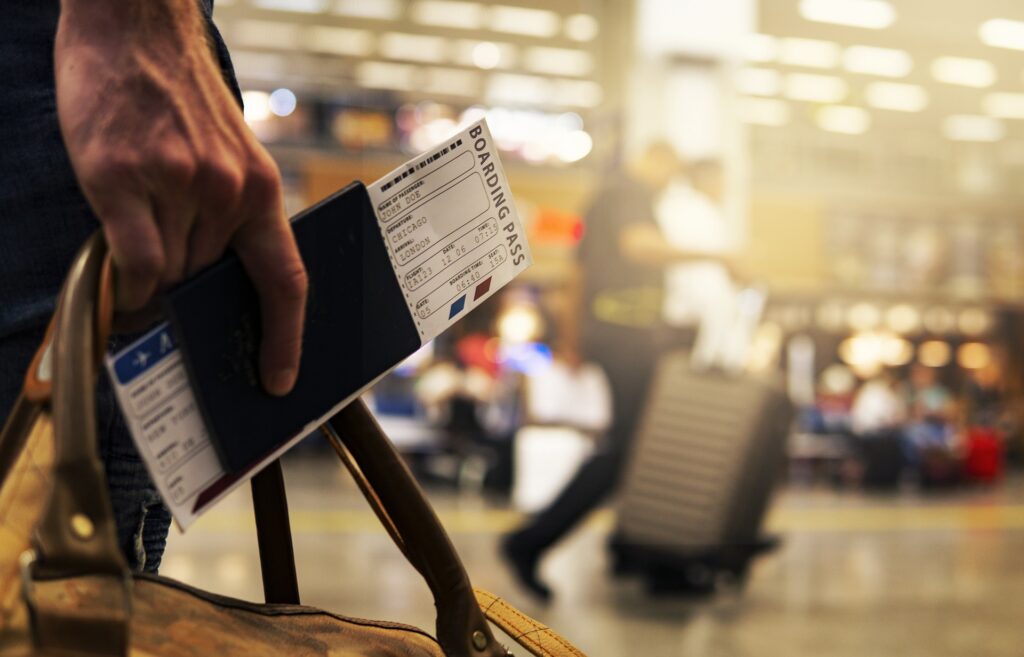TSA Administrator outlines passenger experience improvements
Share
Passengers flying into the United States and transferring onto a domestic flight, could soon encounter a much more streamlined process with shorter transit times.
This is according to David Pekoske, Transportation Security Administration (TSA) Administrator, who was speaking at the annual SXSW Festival.

David Pekokse appeared on a panel entitled, “Accelerating Aviation Security: Innovative New Technology Keeping The Skies Safe”, where he was interviewed by Kyle Arnold of the Dallas Morning News.
As part of the interview, David Pekokse talked about the One Stop Pilot Program Act, which was passed by the US Senate at the end of last year.
This gives the TSA authority to run a pilot program at no more than six “foreign last point of departure airports.” These six airports will be chosen from countries where there’s a comparable passenger security architecture to the USA.
Though passengers will still need to clear immigration, due to entering the USA, they will no longer have to collect their luggage or go through another security check. Instead, they can go directly to their gate for their connecting flight.
US airport international to domestic transfers can sometimes be a stressful experience for passengers, due to all the different arrival procedures they need to go through.
Especially if the flight is delayed, some passengers become concerned that they may miss their connecting flight.
As a result, this pilot program will result in a real tangible passenger experience improvement.
David Pekokse gave the hypothetical example of a passenger flying into Chicago O’Hare and transiting onto a flight to Austin.
He estimated that the new process, once introduced, could save the passenger up to an hour and a half of time.
Screening will be done remotely
Another improvement involves security screening. Right now, you have TSA agents looking at the monitors at every security checkpoint. In future, that will no longer be necessary.
David Pekokse talked about how the TSA is taking the imagery from security scanners and having them assessed away from the actual checkpoint.
Initially this will happen in control rooms at the airport, where a team will look over the images. This improves security, as you have a team on hand that can draw on each other’s expertise if there are any questions.
However, the next step after that could even be to regionalize the process, and take it out of the actual airport. For example, you might have all Texas airport images scanned at one central point.
According to David Pekokse, the result will be faster processing times and “you will see a lot less activity” in terms of TSA staff being visible.
Biometrics – 121 to 1 to several
Biometrics is obviously a big area of interest to APEX member airlines, and here David Pekokse talked about where the TSA is going.
He outlined three principles that the TSA looks at when introducing any new technology, including biometrics.
1 – It needs to improve security effectiveness
2 – It needs to improve security efficiency
3 – It has to improve the passenger experience
David Pekokse also talked about the success of TSA Precheck. Here, the fee has gone down from $85 to $78, as the program running costs for the TSA have decreased.
There are now 15 million passengers enrolled in the program, and recently there was a record of 19,000 enrolling in a single day.
TSA Precheck passengers are more likely to be frequent fliers and more open to technological innovations, so David Pekokse said that they can expect to see the benefits of new processes first.
One innovation the TSA is testing right now is what David Pekokse called ‘one to small number’ photo scanning, as opposed to ‘one to one’ scans.
Right now, one passenger scans his or her driver’s license, and then one camera scan matches the passenger to the ID photo. The accuracy rate of this is over 99%.
David Pekokse described, ‘one to number’ as follows: “We would know for Precheck passengers in particular, which Precheck passengers we will encounter from Austin outbound tomorrow. We would then preload their passport photos into our gallery”, so the system would already know who they might expect to see at the airport the next day.
Finally, David Pekokse was positive that the staffing issues of the previous year would be overcome by the peak 2023 Summer season.
For example, last year Austin Bergstrom International Airport was 100 officers short from a base of 500. This year, David Pekokse expects to see staffing at normal levels.
This comes as increased automation means that the 4% annual increase in passenger numbers no longer needs to result in a corresponding 4% increase in TSA staff.


